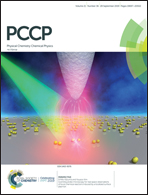Molecular dynamics simulations of shock loading of nearly fully dense granular Ni–Al composites
Abstract
We used molecular dynamics simulations to study the shock propagation, inhomogeneous deformation, and initiation of the chemical reaction characteristics of nearly fully dense reactive Ni–Al composites. For shocks with piston velocities Up ≤ 2.0 km s−1, particle velocity dispersion was observed at the shock front, which increased on increasing the shock strength. Plastic deformation mainly occurred at the grain boundaries or grain junction during the shock rise and was accompanied by the generation of a potential hot spot in the region where severe plasticity happens. The composite exhibited higher strength and lower reactivity than the mixtures with certain porosity. In addition, the shock-induced premature melting of Al led to the expansion of particle velocity dispersion from the wavefront to the shocked zone and the formation of a heterogeneous velocity field for stronger shocks beyond critical Up (2.5 km s−1). The velocity heterogeneity in the shocked region led to localized shear, strong erosion of Ni, and occurrence of ultrafast chemical reactions. Therefore, the shock-induced premature melting of Al led to the mechanochemical effect and played a role in the shock-induced chemical reaction in the reactive metal system.



 Please wait while we load your content...
Please wait while we load your content...